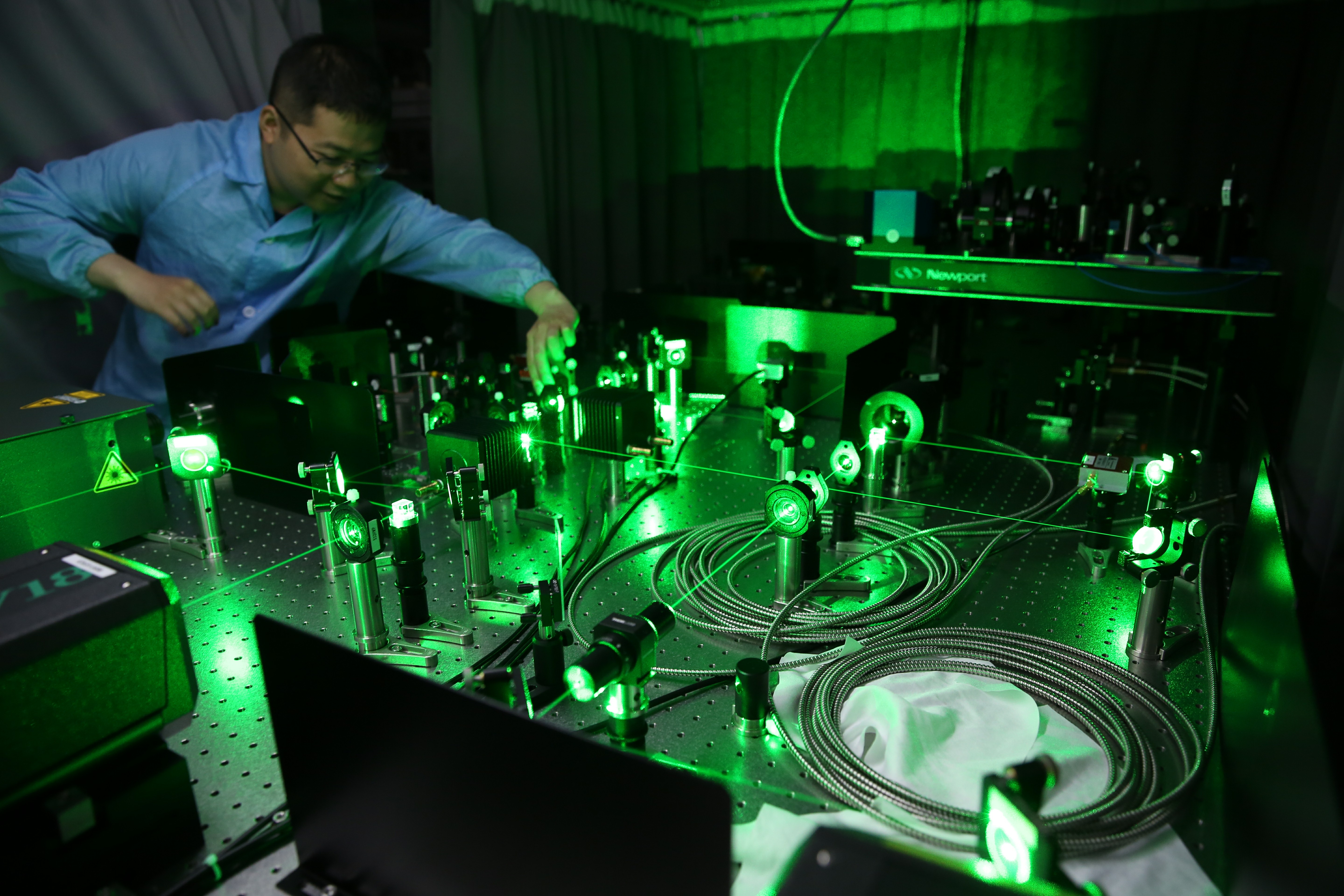China explores new way in climbing quantum technology peak
 0 Comment(s)
0 Comment(s) Print
Print E-mail China Focus, December 20, 2020
E-mail China Focus, December 20, 2020
After a decade that saw China make significant breakthroughs in technological innovation and application, Beijing is now setting its sights on leading the race for quantum technology, which just might be the biggest fish in the advanced tech pond. Yet to succeed, they will need to improve in an area where it has struggled: cutting-edge R&D.
In October, members of the Communist Party of China’s Central Committee gathered for a two-day plenary session, with quantum technology as one of the areas of focus. Such study sessions are regular occurrences for Beijing’s top policy-makers, and the choice of topic serves as a strong indicator of the Party’s policy priorities.
China’s technological rise has been a major force in its development, most famously identifiable in its high-speed rail networks, electric vehicles, and telecommunications networks, among others. However, much of its development in such areas follow a similar formula, one that may not so easily apply to that of breakthrough research in quantum technology.

China’s innovation skill set
Thus far, China’s greatest technological achievements have come through innovative application of existing technology to the country’s unique system, market, and needs. China has definitely become a global leader in innovation, but their strengths in core technology development have not grown with the same breakneck speed as their ability to innovate in business models, price-based efficiency, and scale.
The reasons for China’s challenges in cutting-edge research seem to lie largely in economics: in incentives, capacity, and return-on-investment, it has not made much sense for China or its homegrown firms to develop much of their own core technology. Many of the country’s development goals, as well as the competitive equation for its firms, have often been able to be met in the fastest and most cost-effective manner through application of existing tech.
Smartphones, for example, were first developed by foreign firms, selling for prices only within reach of those with developed-world-level standard of living. In China’s market, the demand was not that it needed to create an alternative to the smartphone, but that it needed to make smartphones accessible to its population, the majority of whom would not be able to afford a high-end iPhone.
Thus, Chinese firms such as Huawei, Vivo, and Xiaomi developed innovative methods for business, manufacturing, and distribution to a lower-income user base, helping make China a world leader in the mobile digital economy.
Yet while it has made more economic sense for China to focus on application of technology than the development of it, there has also been another reason: Creating cutting-edge research institutions, and attracting the talent to work there, is a challenge that requires time to overcome.
The vast majority of the world’s top research universities reside in North America or Europe, and while China’s top schools have been moving their way up the ranks, they still have much to be desired. In part as a downstream effect of that, the talent pool within China may be better oriented towards other strengths than cutting-edge research.
The importance of elite research institutions in attracting and retaining elite talent is difficult to overstate. Take for example a 2019 study on AI talent pools in the US and China by the Paulson Institute’s Matt Sheehan. Based on its assessment, of the top 1 percent of the world’s AI research talent, 29 percent of them were of US origin, while 9 percent were born in the People’s Republic of China (PRC).
However, when examining the current affiliation of elite AI talent, 60 percent held affiliations with US institutions, in contrast with only 1 percent with Chinese. When it comes to the most elite of Chinese-born AI researchers, 8 of every 9 are affiliated with US institutions, not those in the PRC.
Yet it is further down the talent distribution that Chinese institutions display greater representation. Of the top 20 percent of AI talent, 25 percent hails from the PRC. Of that group, 32 percent either studies or works in their home country. If similar distributions exist in other fields as well, it would greatly help explain why China has excelled in innovative application of technology, while struggling to reach the cutting edge.

Climbing the quantum technology mountain
For China, the need for cutting-edge technology is growing in both importance and urgency. As recent years have seen a rapid intensifying of tensions between the two superpowers, the United States has taken efforts to cut off China’s access to both the technology and the talent that had previously helped to power its rapid development. In response, Beijing has increased its emphasis on technological self-reliance. In pursuit of this goal, few areas hold more importance than that of quantum technology.
An emerging field of information technology that relies on the principles of quantum mechanics, quantum technology’s fields of application range from computing to cryptography and sensors. As such, a significant advantage in such a field could potentially create a military, technological, and economic leg-up that could determine the status of global power for the upcoming decades.
Although the topic has seen a greater emphasis in recent months, it has been a focus of Beijing’s for a number of years now. In 2017, China launched the first-ever quantum satellite, as well as a quantum fiberoptic cable spanning from Beijing to Shanghai.
Yet what may give Beijing the most reason to be optimistic about their quantum future is the potential for something that has previously eluded them: a world-leading scientist, and world-leading institution to go with them.
Known as the “father of quantum,” Chinese researcher Pan Jianwei just may be the world’s top expert on the technology, and unlike many of his elite scientist compatriots, his affiliation lies firmly with the PRC. Hoping the maximize this opportunity, Beijing is investing heavily in fostering the Pan Jianweis of the future, working in with the world-renowned scientist to establish the National Laboratory for Quantum Information Science, the world’s largest quantum research facility.
In the past, China neither had the need nor the talent to be a major world leader in breakthrough R&D. In the case of quantum technology, they now have both. Only time will tell if they can meet this new challenge.






Go to Forum >>0 Comment(s)